The River South Tyne begins its journey eastwards to the North Sea high on Cross Fell, the highest hill in the Pennine chain. It works its way through South Tynedale, growing in stature to Hexham where it joins the North Tyne to form the River Tyne. The area covered in this section is from west of Hexham to Alston (which is just inside Cumbria). It goes as far north as Hadrian’s Wall and southwest form Hexham to Alston.
Read More
The River South Tyne is a wide, shallow, beautiful river and as you progress upstream South Tynedale begins to close in around its river. From the confluence the first village is Haydon Bridge. Here the river is very wide and shallow and in the autumn salmon and sea trout can be seen leaping out of the water. Heading west the River Allen flows into the River South Tyne and Allen Banks can be easily accessed. Continuing further west the river runs through farmland which rises increasingly more steeply until Haltwhistle where the river turns south. Haltwhistle is a pleasant small town with an attractive centre. Progressing south the countryside because hillier and the river shallower. The first feature is the impressive Featherstone Castle set into the hillside on a rare stretch of flat ground. A sort distance further upstream is the Lambley Viaduct – a magnificent high, multi-arched structure carrying the now defunct railway high above the River South Tyne.
The South Tyne Trail crosses the viaduct – from the high elevation there are splendid views of the River South Tyne wandering through its dale. From here on to Alston you pass through glorious North Pennine scenery. Alston is a charming market town with a very steep market street and square and the claim to be England’s highest market town. At the bottom of the town is the narrow gauge railway. Whether you are an enthusiast of preservation railways or not you cannot deny the stunning beauty of the ride.
Read Less
-
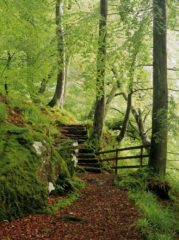
ALLEN BANKS – SOUTH TYNEDALE – NORTHUMBERLAND – AB210
Hadrian's Wall Country, South TynedaleSpring in Allen Banks Woodland Garden in South Tynedale, Northumberland. Allen Banks is where the River Allen flows through the picturesque wooded Allen Gorge.£45.00–£250.00 -

ALLEN BANKS – SOUTH TYNEDALE – NORTHUMBERLAND – AB221
Hadrian's Wall Country, South TynedaleAutumn in Allen Banks woodland garden. Allen Banks was donated to the National Trust by the Bowes Lyons family in 1942 for the public to enjoy as much as they had.£45.00–£250.00 -
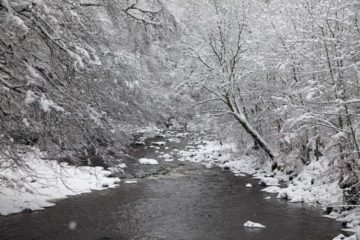
ALLEN BANKS – SOUTH TYNEDALE – AB230E
Hadrian's Wall Country, South TynedaleA very cold and snowy day where the River Allen flows through the steep sided Allen Gorge in South Tynedale, Northumberland.£45.00–£250.00 -
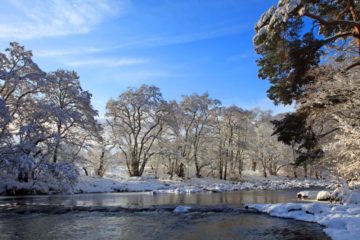
ALLEN BANKS – SOUTH TYNEDALE – NORTHUMBERLAND – AB250E
Hadrian's Wall Country, South TynedaleThe River Allen in South Tynedale, Northumberland, has a double bend which is popular with families and a place where children can safely play in the water. I don't think they would on a day like this.£45.00–£475.00 -

ALLEN BANKS – SOUTH TYNEDALE – AB250N
Hadrian's Wall Country, South TynedaleAllen Banks in South Tynedale, Northumberland, is beautiful at all times. The snow, however, turns it into something magical. At this point the River Allen enters the Allen Gorge.£45.00–£250.00 -
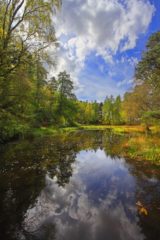
ALLEN BANKS – SOUTH TYNEDALE – NORTHUMBERLAND – AB305
Hadrian's Wall Country, South TynedaleAllen Banks is a beautiful woodland garden given to the National Trust by the Bowes-Lyon Family in 1942. The River Allen flows through its dramatic gorge.£45.00–£250.00 -
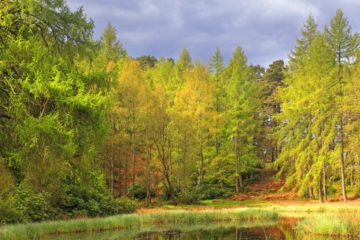
ALLEN BANKS – SOUTH TYNEDALE – AB306
Hadrian's Wall Country, South TynedaleSpring time at Moralee Tarn high above the River Allen and the Allen Gorge in Northumberland. This was originally made as a boating lake in the nineteenth century.£45.00–£250.00 -
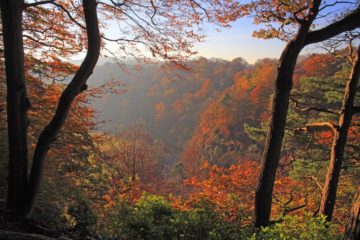
ALLEN BANKS – SOUTH TYNEDALE – NORTHUMBRLAND – AB351C
Hadrian's Wall Country, South TynedaleAn amazing bright and colourful Autumn day at Allen Banks in South Tynedale, Northumberland, high above the Allen Gorge. The River Allen can just be seen at the bottom of the gorge.£45.00–£250.00 -

ALLEN BANKS – SOUTH TYNEDALE – AB539A
Hadrian's Wall Country, South TynedaleAllen Banks in South Tynedale, Northumberland has many magnificent beech trees. They are a year round spectacle changing with the seasons. Here they have been transformed by heavy snow into a wonderful winter scene.£45.00–£250.00 -
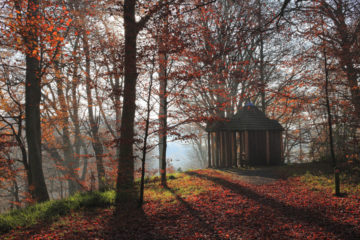
ALLEN BANKS – NORTHUMBERLAND – AB541D1
Hadrian's Wall Country, South TynedaleWith a magnificent view across the Allen Banks Gorge, the original Victorian Gazebo has been rebuilt. The gazebo has a table and seating so you can linger and enjoy the beauty of the scenery.£45.00–£250.00 -
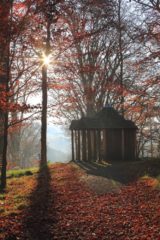
ALLEN BANKS – SOUTH TYNEDALE – AB541E
Hadrian's Wall Country, South TynedaleWith a magnificent view across the Allen Banks Gorge, the original Victorian Gazebo has been rebuilt. The gazebo has a table and seating so you can linger and enjoy the beauty of the scenery.£45.00–£250.00 -

ALLEN BANKS – SOUTH TYNEDALE – AB563
Hadrian's Wall Country, South TynedaleThe spectacle of autumn in the UK ranges from disappointing to spectacular according to the seasonal weather. When it is good at Allen Banks in Northumberland is GOOD!!!!!£45.00–£250.00 -

ALLEN BANKS – SOUTH TYNEDALE – AB564
Hadrian's Wall Country, South TynedaleA walk in the woods is always therapeutic and revives the soul. Never more so than autumn at Allen Banks in Northumberland.£45.00–£250.00 -

ALLEN BANKS – SOUTH TYNEDALE – AB568E
Hadrian's Wall Country, South TynedaleHigh above the River Allen and the Allen Gorge in Northumberland the footpath weaves its way amongst the spectacle of autumn colour.£45.00–£250.00 -

ALLEN BANKS – SOUTH TYNEDALE – AB568H
Hadrian's Wall Country, South TynedaleWhat better way to wind down a busy day than a gentle stroll in the last rays of the autumn sun at Allen Banks in Northumberland.£45.00–£250.00 -

RIVER ALLEN – STAWARD GORGE – NORTHUMBERLAND – AB720
Hadrian's Wall Country, South TynedaleFrom close to the start of the Staward Gorge in Northumberland there is no hint of its presence or size. It comes as a big surprise when you enter it.£45.00–£475.00 -

RIVER ALLEN – STAWARD GORGE – NORTHUMBERLAND – AB721
Hadrian's Wall Country, South TynedaleA few minutes walk downstream from Cupola Bridge suddenly transports you to a different world in the Staward Gorge. On a sunny late autumn day it can be spectacular.£45.00–£475.00 -

CUPOLA BRIDGE – RIVER ALLEN – STAWARD GORGE – AB851
Hadrian's Wall Country, South TynedaleCupola Bridge is just below the confluence of the River East Allen and the River West Allen which forms the River Allen. Just below Cupola Bridge the river enters the dramatic Staward Gorge.£45.00–£475.00 -
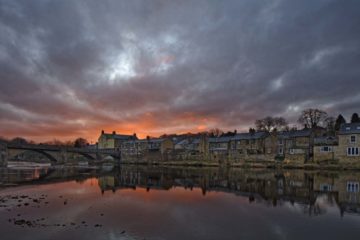
HAYDON BRIDGE – SOUTH TYNEDALE – NORTHUMBERLAND – ST206.1
Hadrian's Wall Country, South TynedaleA wild looking sky reflecting in the River South Tyne at Haydon Bridge in Northumberland on a late winter morning.£45.00–£475.00 -
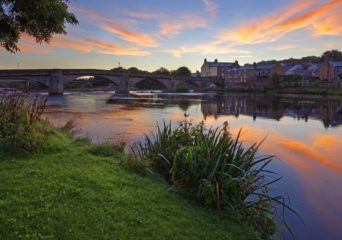
HAYDON BRIDGE – SOUTH TYNEDALE – NORTHUMBERLAND – ST208.10
Hadrian's Wall Country, South TynedaleHaydon Bridge is a small village to the east of Hexham built around a wide, shallow section of the River South Tyne. In the autumn it is a good place to see salmon making their way up river.£45.00–£475.00 -

HAYDON BRIDGE – SOUTH TYNEDALE – ST208.5
Hadrian's Wall Country, South TynedaleThe River South Tyne on a blustery early autumn morning in South Tynedale, Northumberland. Like so many rivers with sources deep into northern hills the normally benign river can become a raging torrent in hours.£45.00–£250.00 -
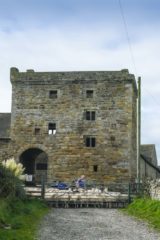
WILLIMOTESWICK – NEAR – BARDONMILL – ST446
Hadrian's Wall Country, South TynedaleWillimoteswick originates from the 12th/13th Century and was made into a manor house around 1600. It was largely rebuilt again c1900. Today it is a working farm.£45.00–£475.00 -
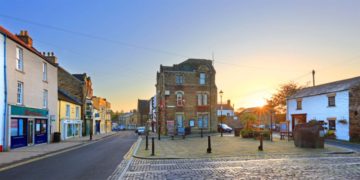
HALTWHISTLE – SOUTH TYNEDALE – NORTHUMBERLAND – ST455P
Hadrian's Wall Country, South TynedaleHaltwhistle is a pleasant Northumberland small town in South Tynedale close to Hadrian's Wall. It is a good centre for visiting Hadrian's Wall.£45.00–£475.00 -
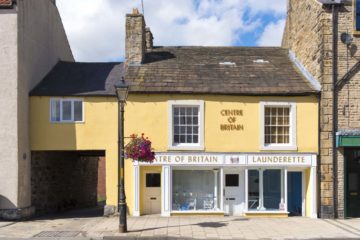
HALTWHISTLE SOUTH TYNEDALE – ST456
Hadrian's Wall Country, South TynedaleA 16th/17th Century defendable house. Not so important these days, but in the time of the Border Rievers a necessity! Today its role is entirely different.£45.00–£475.00 -

FEATHERSTONE CASTLE – SOUTH TYNEDALE – NORTHUMBERLAND – ST527
Hadrian's Wall Country, South TynedaleFeatherstone Castle on the banks of the River South Tyne in Northumberland was originally built in the 17th century. Its current manifestation as a castle has evolved after being modified by a succession of owners.£45.00–£475.00 -

LAMBLEY VIADUCT – SOUTH TYNEDALE – NORTHUMBERLAND – ST606A
Hadrian's Wall Country, South TynedaleThe Lambley Viaduct carries the railway line from Alston in Cumbria to Haltwhistle in Northumberland following the coarse of the River South Tyne. It carried coal and lead when mining was the dominant industry.£45.00–£475.00 -
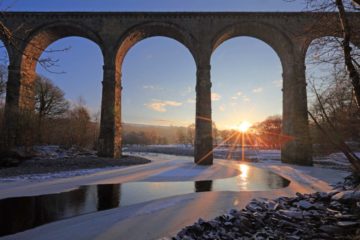
LAMBLEY VIADUCT – SOUTH TYNEDALE – NORTHUMBERLAND – ST606C
Hadrian's Wall Country, South TynedaleThe Lambley Viaduct carries the railway line from Alston in Cumbria to Haltwhistle in Northumberland following the coarse of the River South Tyne. It carried coal and lead when mining was the dominant industry.£45.00–£475.00 -
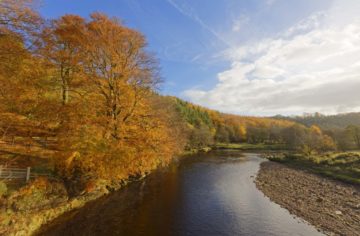
RIVER SOUTH TYNE – SOUTH TYNEDALE – NORTHUMNBERLAND – ST750
Hadrian's Wall Country, South TynedaleThe River South Tyne begins life high on Cross Fell - the highest hill in the Pennine Chain. Near Coanwood in Northumberland it widens and meanders.£45.00–£475.00 -
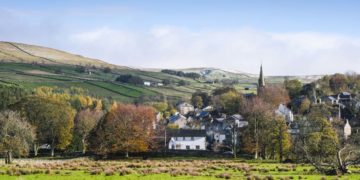
ALSTON – SOUTH TYNEDALE – CUMBRIA – ST860.4
Hadrian's Wall Country, South TynedaleAlston is a picturesque market town in beautiful South Tynedale in the North Pennines. It is quintessential Pennine scenery with the its Fells and Dales.£45.00–£475.00

